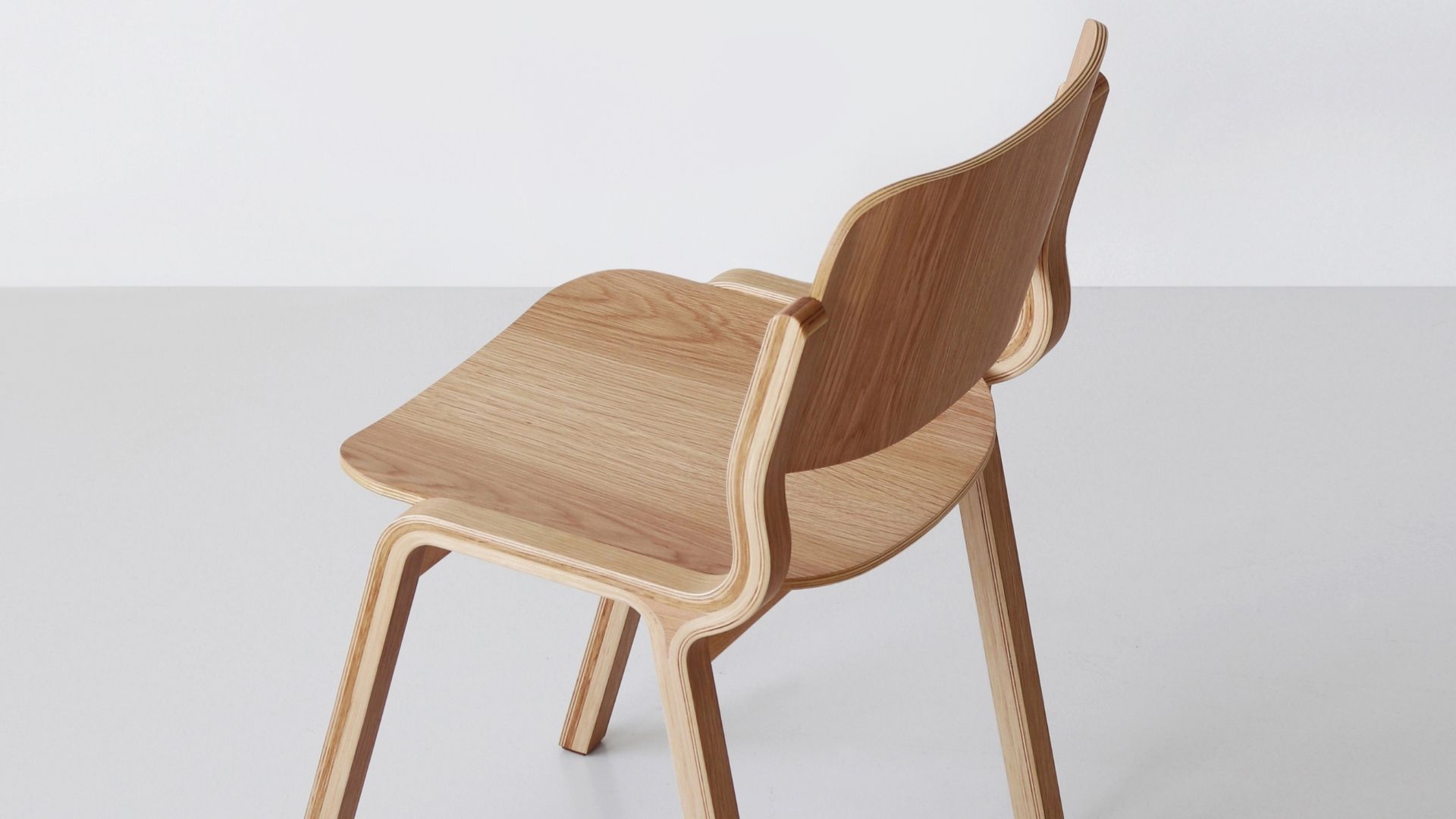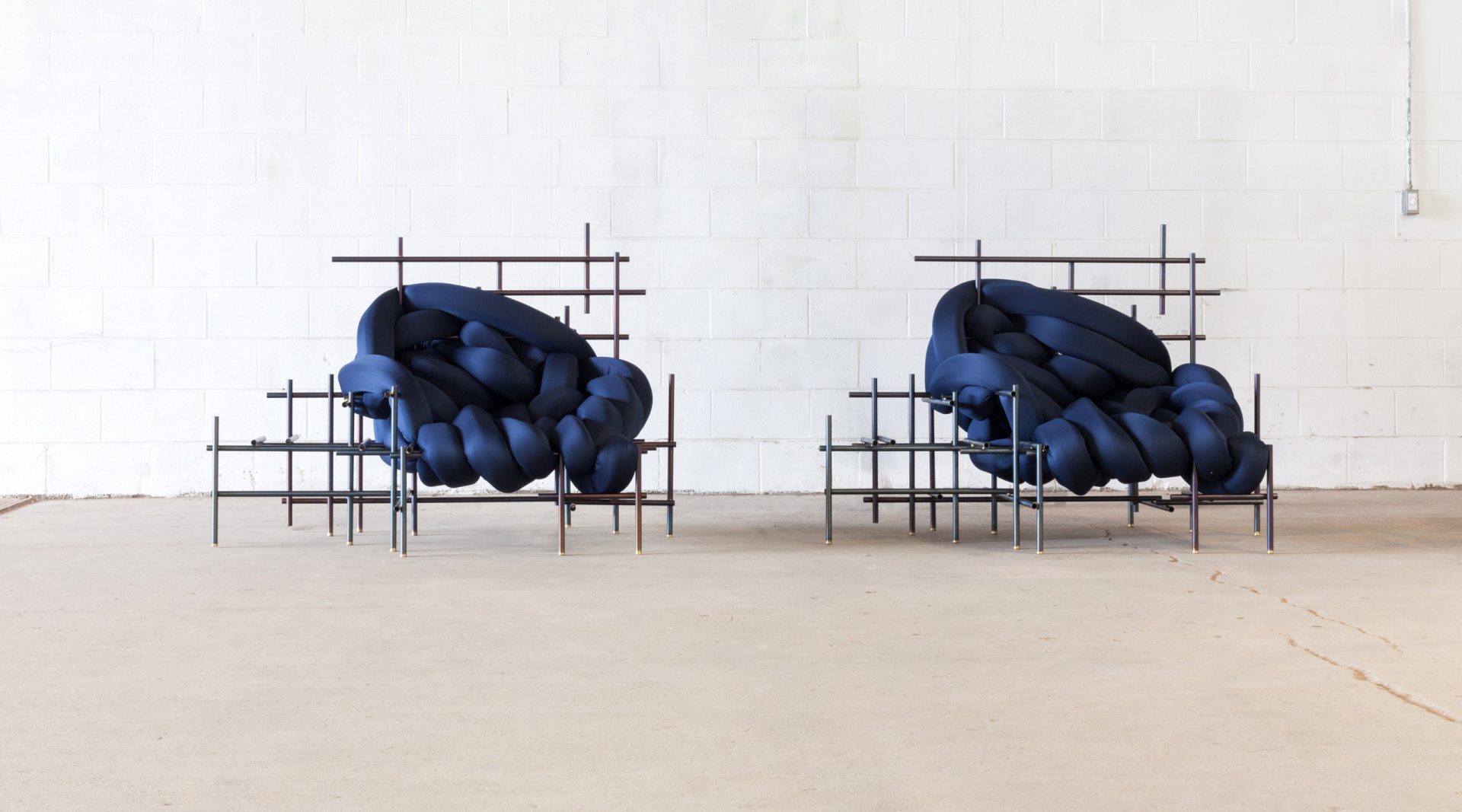6 circular design strategies to follow when designing furniture
Designers should design with the circular economy in mind, writes New York-based mebl | Transforming Furniture.

In collaboration with Milan-based circular consultancy company SOMA, New York-based mebl | Transforming Furniture outlines 6 circular design strategies to design furniture.
Climate change and social-economic inequalities confirm that our throwaway economic system and culture aren’t working for either the environment, people or businesses.
How can we transform this into a new system in which we eradicate waste, regenerate nature and keep resources in use?
The answer lies in the circular economy.
With a practical framework, this economic system tackles climate change and biodiversity loss while addressing social and economic needs.
At the heart of the circular economy is design– a tool ready to repurpose everything from houses to furniture.
Inherent in the design process are various decisions that determine how something is manufactured, used, and ultimately discarded.
Our design choices are responsible for 80% of the environmental impact of products, systems, and services.
In this article, we share 6 circular design strategies for furniture designers who want to work with the circular economy in mind.
These strategies are complementary, and consider not only end-user needs but the system within which the design will exist.
1. Design to close loops
When it comes to the circular economy, “closing the loops” is a recurrent expression.
To understand what it means, we need to consider that our economic system comprises two cycles: a technical and a biological one.

Regarding materials, there are biological materials that can safely return to the natural world, biodegrade over time, return nutrients to ecosystems.
Think biomaterials such as mycelium, algae, and organic food waste.
And technical materials that can’t return to the environment – think metals, plastics, and synthetic chemicals. But technical materials can be repurposed.

Designing to ‘close loops’ means design aimed at reintroducing materials and components back to the biological or technical cycle.
In this way, we greatly reduce waste and pollution.
The principle of designing to close loops is the foundation for the following 5 circular design strategies below.
Reference Project: Costume Sofa System
2. Shift from products to services
The transition from ownership to access is crucial to the circular economy.
Often, customers only require access to — the opportunity to use — a product for a short period. After that, they can return the product to the company or pass it on to a new user.
Recent years have seen the rise of the sharing economy.
New businesses are offering products either through rental, subscription, sharing, or leasing rather than selling them. Don’t just think of Uber and Airbnb, but also furniture.
Dutch furniture company Ahrend came up with “Furniture as a Service” – a subscription service for companies.
ZZ Driggs is an example of the same, for residential use, in the USA.

The brands remain the owners of the furniture, and organizations/individuals only pay for the period they use the tables, chairs, cabinets and sofas.
By combining modular design with a rental service, “Furniture as a Service” extends product life cycles, reduces waste and decreases CO2 emission up to 40% per year.
Then, whenever a piece of furniture no longer meets customer needs, Ahrend uses its parts to create new products.
The very last step is recycling the raw materials used.
Example service: Furniture as a Service
3. Extended product life
Furniture and its components should be designed for ‘extended longevity’ to last a long long time, and also to invite reuse, repair, and remanufacture.
From electronics to clothes, from houses to furniture, from food to transport, “we need to make things to be made again”, explains Tim Brown, chair of the global design firm IDEO.
In the current linear economy, we often experience planned obsolescence, in which consumers are pushed to never-ending upgrades.
You might be thinking of computers, mobile phones, printers, washing machines, etc, right?!
We also invite you to reflect on furniture – think sofas, bookshelves, mattresses and beds.

A great example of extended product life comes from Vita Group and Veldeman Bedding.
Together they offer a sleep system that allows both bed and mattress to be recycled.
They use only a limited number of materials that are either recyclable or reusable.

And everything is built without glue or staples, thus allowing for eventual easy disassembly into parts.
As a result, this sleep system can always be repaired, increasing its life cycle and reducing the need to produce new beds and mattresses.
Reference project: Velda Sleep System

4. Choose safe & circular materials
“Materials make up the entire world around us, yet very few people think about them daily” explains Liz Corbin, the founder and director of Materiom, a multinational company specializing in high-performance engineered materials.

Choosing the right material is key in a circular design economy.
Some materials contain chemicals that are harmful to humans or the environment.
Additives are often used to improve performance such as flexibility or durability.

But it is imperative to ‘design out’ these toxins.
Designers are experimenting with manufacturing based on all kinds of materials: algae, proteins, mushrooms (mycelium), bacteria, food waste, etc.

New materials are emerging as the main drivers of innovation in product and interior design as well as in architecture.
Reference Project: Algae Lab
Reference Material: Compostboards Boards
The Nextatlas sustainable furniture trend forecast showed an ever increasing popularity for sustainable design and the longing for more meaning and not for more “stuff”.
5. Design with less
What happens if we focus on finding solutions to deliver products or services that use the minimum resources possible?
In addition to turning products into services (strategy 03), we can design products with the least amount of physical matter.
Furniture as a Service by Ahrend manages to do both by combining modular design with a rental service.

The AI Chair from Italian brand Kartell by French designer Philippe Starck is another good example.
This chair is the first created by A.I. in collaboration with human beings!
The team used an algorithm to conceive a chair with minimal material as 100% recycled.
Tamu Chair designed by Patrick Jouin is completely foldable, which means it can be flat packed and requires less packaging, less plastic, and less space.

This allows for more efficient shipping.
Inspired by natural organic forms, Tamu was created with 3D printing.
Reference Products: AI CHAIR + TAMU CHAIR
6. Go modular
Modular design means dividing a system into smaller parts called modules.
Each module can be created independently, modified, replaced or exchanged by other modules within the same or a different system.
Modular furniture has two great advantages:
First, it is much easier to repair, remanufacture and/or upgrade just a part of a product (rather than the whole thing)
This also makes disassembly easier.
As a result, we decrease the cost and effort of switching components when they no longer work.
In a circular economy, these components would be reintroduced back to the technical loop (as explained in strategy 01, above).
The second advantage is that modular furniture systems are also easier to customize and adapt to users’ evolving needs.
This prevents products from becoming obsolete so quickly, ensuring they are kept in use as long as possible.
Meet SofaForLife.
It can be assembled and disassembled within 10 minutes using nothing but a screwdriver.

To expand the sofa, users just purchase another module (e.g. turning a 2-seater into a 3-seater).
Consumers can return all parts — cushion covers, legs, armrests, etc –in exchange for new ones.
The company will recycle the old ones to reduce waste and ensure all materials are sustainable.
When we learn that there are practical circular design strategies to make design choices that are far more sustainable, we begin to understand that waste is indeed a design flaw and a human-made invention.
And that a global transition to truly ‘circular’ furniture is possible.
















